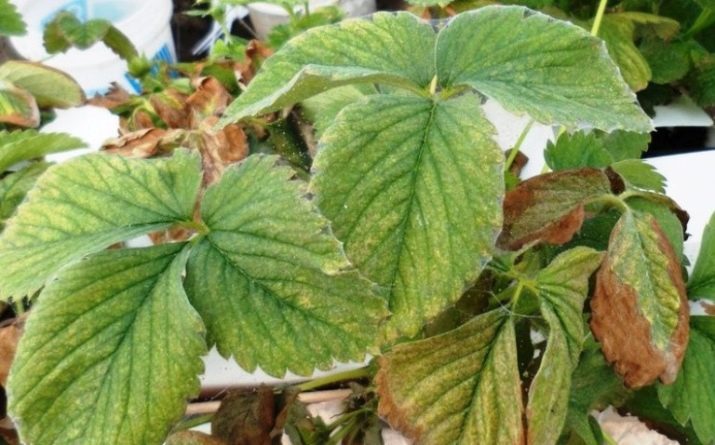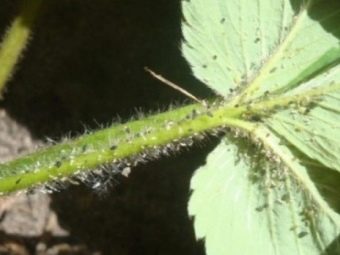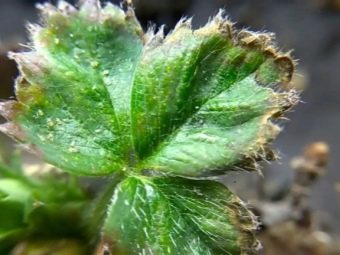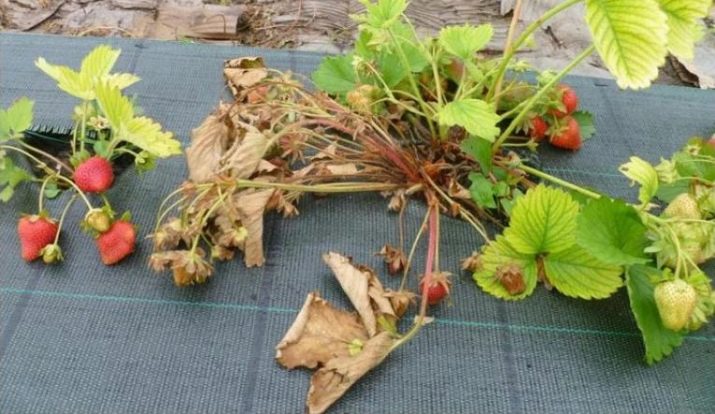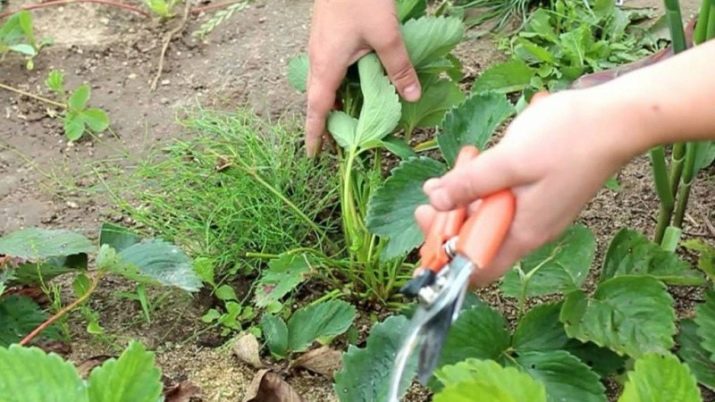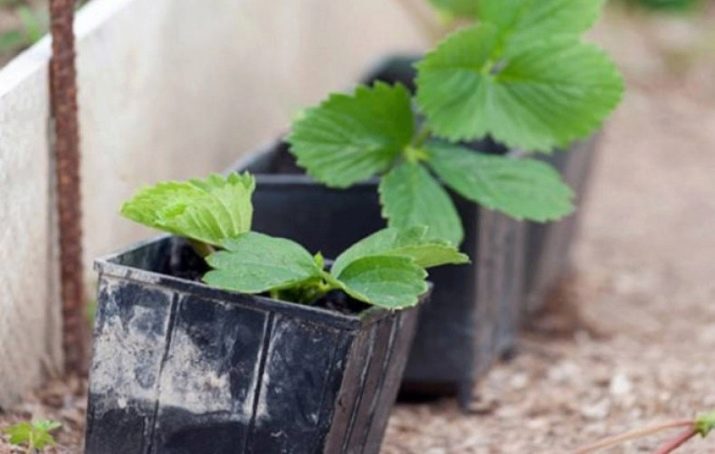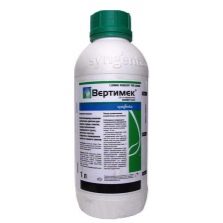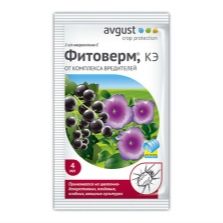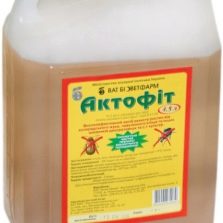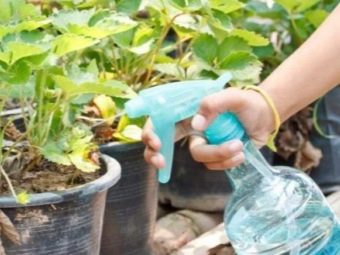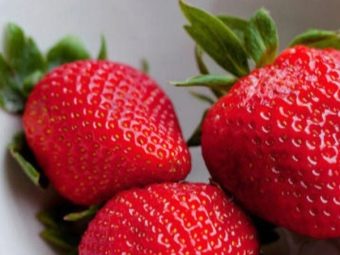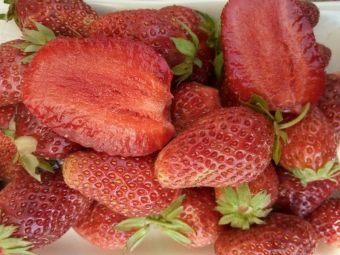How to deal with spider mites on strawberries?
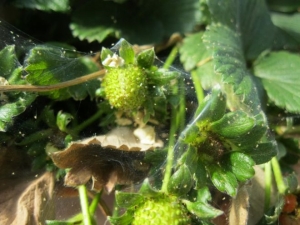
Cultivation of garden strawberries is associated with many subtleties; it requires knowledge of the characteristics of planting and caring for this tasty berry.But in order to get consistently high yields, you will have to take measures against many pests of this crop. Especially dangerous for her is the appearance of spider mites.
Why does a tick appear?
Unfortunately, a spider mite on a strawberry is not uncommon, this microscopic insect is hard to notice, and a strawberry plantation can suffer greatly because of its presence. The parasite can cause the greatest harm to adult bushes at the age of 3-4 years, so you should carefully examine the strawberries when leaving, and begin to deal with the pest at the first signs of damage.
Many gardeners are interested in what factors influence its appearance, and what, in fact, is its harmfulness.
There are several reasons for insect breeding on strawberries:
- initially affected planting material;
- penetration of infection (tick larvae) through clothing and shoes;
- warm moist environment that is favorable for the replication of the microorganism.
This type of tick belongs to arthropod spider-like creatures, has a rounded body covered with sparse bristles. Its color can be both yellow and brown, and greenish, merging with the foliage of the plant. Getting on the leaves of strawberries, the insect braids the web with a spider web and begins active and very fast reproduction. In hot and humid weather, his offspring appears already on the third day after laying eggs. If the parasite is discovered too late, it manages to produce many similar organisms, and then you can say goodbye to the harvest.
How to determine the infection?
Basically, these creatures settle on young straw stalks and the underside of the leaf, thus hiding from the rays of the sun. For this reason, it is almost impossible to see them, however, the condition of the bushes may indicate a defeat.
The main symptoms confirming the presence of the pest:
- slow growth of culture - the bush seems smaller, its green mass and height do not reach standard sizes;
- foliage color changes, it becomes yellow, wrinkled, subject to twisting and falling off;
- Some leaves are in the web or whitish film, mainly, this is the lower part of the leaf plate.
The bush will continue to dry and ache, as the parasite feeds on the sap of the leaves. Because of this, the berries also dry out and decrease. In winter, such plants are likely to die. The danger of this microorganism for such a culture as strawberries, lies in the fact that, in addition to depleting the plant, it is also a carrier of diseases. It is not uncommon when, as a result of tick infestation, strawberries were subjected to such an unpleasant disease as gray rot.
The pest, despite its short life cycle, can produce up to 12 new generations of parasites over the summer, and in early September its population can grow to enormous size.
To get rid of insects, the fight against them must be comprehensive and ongoing throughout the season.
Prevention
It is easier to prevent the appearance of a dangerous microorganism by periodically conducting preventive measures than to fight its ever-expanding population.
Here is a list of actions that every grower needs to remember:
- it is necessary to start treatment in early spring after snow melting; for this purpose, the ground of the beds is poured with hot water;
- if a tick is found, it is necessary to remove the damaged leaves, and sometimes it is worth getting rid of the whole bush, since infection can spread from it to neighboring plants;
- in the fall, old strawberry leaves, mustaches and weed grass must be removed because the pest can overwinter under them;
- in dry times, irrigation should be carried out regularly;
- in order for the culture to resist the microorganism, it must be periodically fed with organic and mineral fertilizers;
- since the old strawberry bushes have a lower immunity, they should be transplanted to new beds every four years;
- buying seedlings or preparing it yourself, you need to make sure that it is not infected;
- young saplings can be secured by immersing them in hot water for 10-15 minutes;
- if the treatment is carried out during fruiting, the water temperature should not exceed +60 degrees.
In addition, there are scaring, biological agents that are harmless to the plant, which can be used against insects.
Methods of eliminating insects
If a tick has appeared, then most likely it will not be possible to destroy it completely, and one can only limit its reproduction, for which a systematic struggle involving the use of insecticides and folk remedies will be required.
First of all, you need to ensure that the array of bushes is not too thick, and they are regularly aired, getting a sufficient amount of sunlight, which the tick does not tolerate.
Consider effective chemicals for the destruction of a harmful insect.
- "Vertimek"causing paralysis and death of the microorganism. Insecticide should be treated bush at the first detection of the pest. It should be borne in mind that the drug is dangerous not only for insects, but also for birds.
- "Fitoverm" - allows you to destroy the tick within three days. The tool has a moderate degree of danger, but can cause the death of bees.
- "Actofit" - insecticide affects the nervous system of the insect, immobilizes it, after which it dies. It is important to carry out processing at temperatures above +18 degrees.
Horticultural experts also recommend using a well-known tool, such as Karbofos, to eliminate a harmful microorganism. It has a short-term effect, but after two weeks, and sometimes earlier, chemicals in the soil are destroyed.
Processing, it is desirable to do in August, after harvest:
- leaflets should be cut out;
- each sheet plate is watered with a warm aqueous solution of the preparation (for 8 l 60 g of the substance);
- strawberry beds covered with film and left for several hours.
You can use popular recipes to get rid of the garden aggressor, including spraying:
- freshly prepared garlic water (200 g of product per bucket);
- decoction of dandelion leaves, infused for about four hours;
- filtered infusion of onion husks.
It is also reasonable to use soap liquids or solutions with ordinary laundry detergent. Some people advise making a product based on soap, water and alcohol - the treatment is repeated twice at weekly intervals, thanks to which it is possible to destroy the eggs of the tick. To enhance the effectiveness of combining the use of such agents with chemicals.
It is important to alternate between different disinfection methods, as the insect quickly adapts to adverse conditions.
Any spraying is best done in the evening when there is no wind.
Beginner gardeners who are still poorly versed in methods of dealing with ticks and other pests may need to start cultivating strawberries with its more resistant varieties that are not susceptible to these microorganisms.
These include:
- "Cinderella of Kuban";
- Sunrise;
- "Anastasia";
- "Purple";
- "Sunny glade";
- "First Grader".
The most powerful and resistant are hybrid plants, but they are also susceptible to infection and disease, albeit to a lesser extent.
How to deal with spider mite, see the following video.

